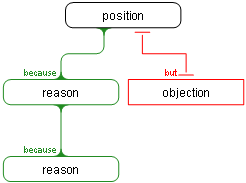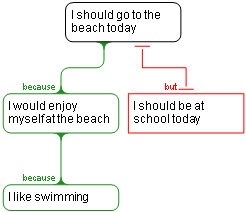The Science Of Scientific Writing Set 1 Set 1-Argument Parts : Second Page : Third Page : Example : Exercise 1 : Exercise 2 : Exercise 3 : Exercise 4 : Exercise 5 : Final Page - Set 1.
OVERVIEW: The way to well-written science
PART I: Paragraphs and Sentences
SET A: Paragraphs: The Maps Behind Them
SET B: Paragraphs: Using Maps to Meet Readers' Expectations
SET C: Paragraphs with Something Extra: Points and Tails
SET D: The Generic Section: Expectations and Maps as Blueprints
SET E: Scientific Sections: The Methods and Results
SET F: Scientific Sections: The Discussion
SET G : Scientific Sections: The Introduction
SET H : Sentences
SET I : The Paper as a Whole
PART II: The Paper and its Sections
SET 1: Argument Parts
SET 2: Indicator Words
SET 4: Locating Arguments in Prose
SET 5: Rationale's Essay Planner
SET 6: Evidence in Arguments: Basis Boxes
Synthesis 1: Position-Early Paragraphs
Synthesis 2: Position-Final Paragraphs
Synthesis 3: Writing a Discussion I
Synthesis 4: Writing a Discussion II
In Set 1 we'll give you a set of claim boxes like these:

We'll also give you a template that shows the pattern of reasoning, like this one:

Your job is to use the claim boxes to build an argument matching the template.
To do that, you'll need to work out what kind of claim each box contains (position, reason, or objection) and where each claim belongs in the logical structure of that argument.
These claims fit into that structure in this way:

Here's how we arrived at this map.
Content of this page drawn in whole or part from the Austhink Rationale Exercises with permission from Austhink.